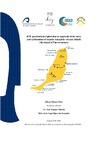Identificador persistente para citar o vincular este elemento:
https://accedacris.ulpgc.es/jspui/handle/10553/75237
| Título: | REE geochemical exploration in magmatic felsic rocks and carbonatites of oceanic intraplate volcanic islands (the island of Fuerteventura) | Autores/as: | Greca Oteo, Diego | Director/a : | Mangas Viñuela, José Quevedo González, Luis A |
Clasificación UNESCO: | 2503 Geoquímica | Fecha de publicación: | 2020 | Resumen: | Demand for Rare Earth Elements (REE) by industrialized countries in recent decades is high because due to the requirement to supply high-tech industries. Currently, China dominates the production and the REE market by 90% and that’s why industrialized countries are focused on finding RE resources in their territories to avoid depending on the Chinese supply. REE deposits are mainly centered on complexes of alkaline magmatic rocks and carbonatites. For this reason, countries are carrying out geological exploration of these resources to try to alleviate the deficit of these critical elements for the industry. In this sense, the objective of the work has been focused on the geochemical exploration of REE in the complexes of alkaline igneous rocks and carbonatites from different periods, which emerge on the island of Fuerteventura. Thus, these rocks appear both in the Oligocene (34 to 23 Ma, group of submarine volcanic rocks, ultra-alkaline and plutonic complex of the basal complex), in the Miocene (23 to 12 Ma, shield volcanic complex) and in the Plioquaternary (<5.3 Ma, volcanic rejuvenation group). A total of 74 collected samples of alkaline igneous rocks and carbonatites from a 90s trip to Fuerteventura were geochemical analyzed. There were concentration data of 69 chemical elements for every sample: eight major (Si, O, Al, Mg, Fe, Ca, Na and K), four minor (Ti, P, Mn and H) and traces (eight REE included). Based on these data, binary and ternary geochemical diagrams for igneous rocks and carbonatites have been developed. Results confirm majority of igneous rocks are alkaline, subsaturated in silica, spatially and genetically related and are the result of a fractional crystallization process in the island’s Oligocene magma chamber. Highest concentrations of REE are associated with carbonatites (ΣREE between 511 and 7372 ppm), felsic plutonic rocks (ΣREE between 51 and 2290 ppm) and, barely, with studied mafic and ultramafic rocks (ΣREE between 116 and 357 ppm). Furthermore, LREE concentrations are more important than HREE and Ce>La>Nd>Sm>Eu series is found. REE concentrations in felsic igneous rocks and carbonatites are very attractive, considering to develop mining plans. However, it would be necessary to select areas free of environmental and military limitations, and carry out detailed geological and geochemical exploration studies of REE plus economic valuation, to finally determine the future viability of mining. | Departamento: | Departamento de Física | Facultad: | Facultad de Ciencias del Mar | Titulación: | Máster Universitario en Oceanografía por la Universidad de Cádiz, la Universidad de Las Palmas de Gran Canaria y la Universidad de Vigo | URI: | https://accedacris.ulpgc.es/handle/10553/75237 |
| Colección: | Trabajo final de máster |
En el caso de que no encuentre el documento puede ser debido a que el centro o las/os autoras/es no autorizan su publicación. Si tiene verdadero interés en el contenido del mismo, puede dirigirse al director/a o directores/as del trabajo cuyos datos encontrará más arriba.
Vista completaVisitas
214
actualizado el 03-ago-2024
Descargas
194
actualizado el 03-ago-2024
Google ScholarTM
Verifica
Comparte
Exporta metadatos
Los elementos en ULPGC accedaCRIS están protegidos por derechos de autor con todos los derechos reservados, a menos que se indique lo contrario.
